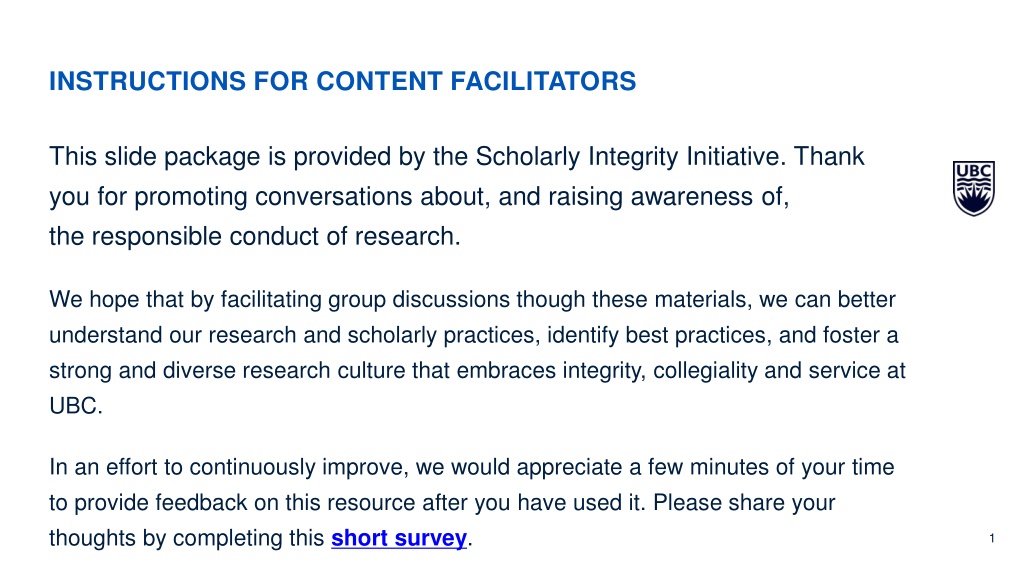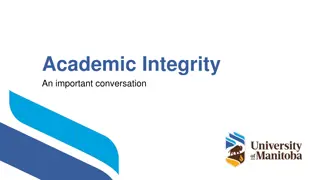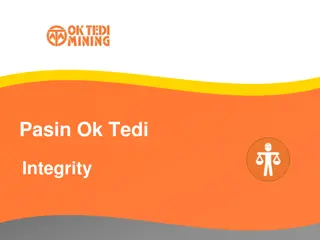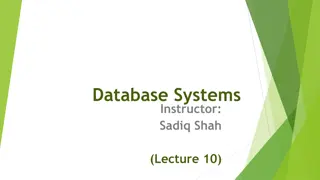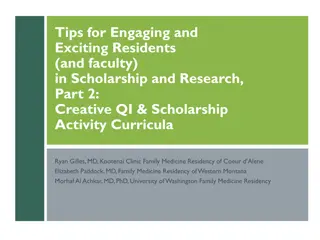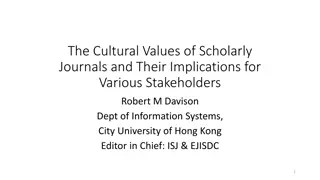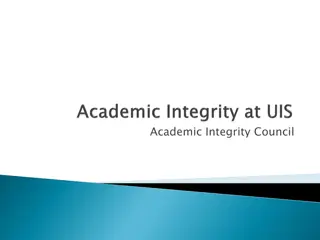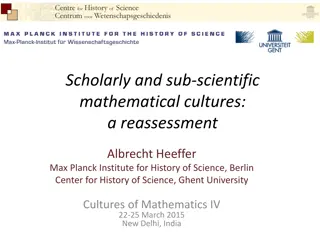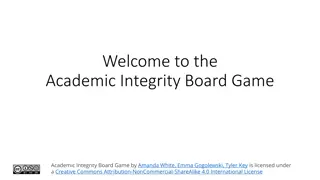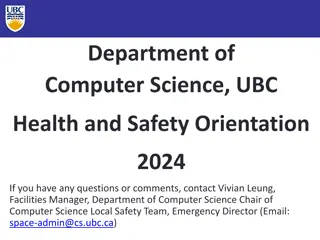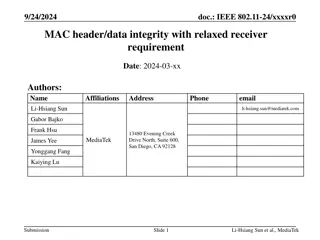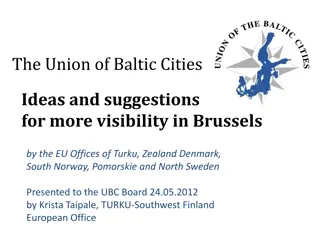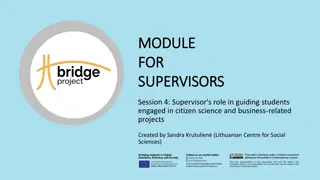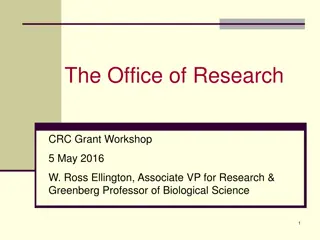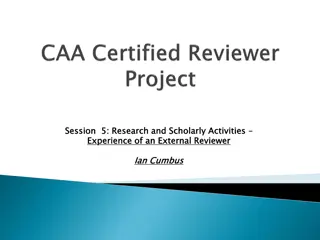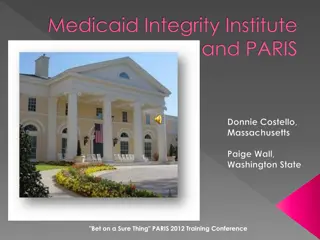Promoting Scholarly Integrity at UBC
The Scholarly Integrity Initiative provides a slide package for content facilitators to promote responsible research conduct and foster a research culture that embraces integrity and collegiality at UBC. The resource includes core slide presentations, additional slides for audience needs, and guidance on using the material effectively. Facilitators are encouraged to familiarize themselves with Scholarly Integrity Policy and relevant scholarly standards in their disciplines. The resource is licensed under Creative Commons Attribution 4.0 International License. Responsible authorship, credit attribution, and the importance of appropriately assigning authorship are key topics covered in the content.
Download Presentation

Please find below an Image/Link to download the presentation.
The content on the website is provided AS IS for your information and personal use only. It may not be sold, licensed, or shared on other websites without obtaining consent from the author.If you encounter any issues during the download, it is possible that the publisher has removed the file from their server.
You are allowed to download the files provided on this website for personal or commercial use, subject to the condition that they are used lawfully. All files are the property of their respective owners.
The content on the website is provided AS IS for your information and personal use only. It may not be sold, licensed, or shared on other websites without obtaining consent from the author.
E N D
Presentation Transcript
INSTRUCTIONS FOR CONTENT FACILITATORS This slide package is provided by the Scholarly Integrity Initiative. Thank you for promoting conversations about, and raising awareness of, the responsible conduct of research. We hope that by facilitating group discussions though these materials, we can better understand our research and scholarly practices, identify best practices, and foster a strong and diverse research culture that embraces integrity, collegiality and service at UBC. In an effort to continuously improve, we would appreciate a few minutes of your time to provide feedback on this resource after you have used it. Please share your thoughts by completing this short survey. 1
HOW TO USE THIS RESOURCE There are two sections to this slide deck resource. 1. The first section is a core slide presentation. Use this to introduce concepts, discuss terminology, and generate discussion with your audience. 2. The second section includes additional slides that you can add to the core presentation, depending on the needs of your audience. Facilitator notes are provided with each slide. Before delivering this material, you should familiarize yourself with the Scholarly Integrity Policy and the relevant scholarly standards within your discipline. If you need additional support, please contact the Scholarly Integrity Initiative. 2
ADAPTING AND SHARING THIS RESOURCE This introductory slide deck is licensed under the Creative Commons Attribution 4.0 International License, which allows you to share and adapt this resource as long as you give appropriate credit, provide a link to the license and indicate if changes were made to the content. For more information about this license, please visit: http://creativecommons.org/licenses/by/4.0/ Please attribute to the Scholarly Integrity Initiative, Office of the Vice-President, Research & Innovation, The University of British Columbia. 3
RESPONSIBLE AUTHORSHIP & CREDIT ATTRIBUTION The Scholarly Integrity Initiative HTTPS://RESPONSIBLE.RESEARCH.UBC.CA
INTRODUCTION What is authorship? Who is an author? How should we assign authorship? What about the order of authors? How does authorship relate to scholarly integrity? 5
When we appropriately assign authorship, we are support scholarly integrity by: Crediting researchers for their intellectual contributions Designating responsibility for the accuracy and quality of research 6
CONTRIBUTORS Who might the authorship criteria exclude, despite having contributed to the research? What are some considerations when acknowledging contributors? How does this relate to scholarly integrity? 7
ACCURATE ACKNOWLEDGEMENTS UPHOLD SCHOLARLY INTEGRITY BY: Recognizing those who made the research possible Encouraging continued research collaboration 8
As research becomes more collaborative and interdisciplinary, we need to ensure we are accurately assigning credit and responsibility for our work. Doing so can also foster collegiality, collaboration and accountability. WHAT DOES THIS MEAN FOR US? 9
WHAT DOES THIS MEAN FOR US? Be aware of relevant disciplinary authorship guidelines and expectations of different publications Clarify and establish authorship criteria prior to starting a project Document our intellectual contributions throughout the research lifecycle Engage in ongoing dialogue regarding authorship assignment Others? 10
SUPPORT & RESOURCES Disciplinary Authorship & Publication Guidelines American Chemistry Society: https://pubs.acs.org/ American Psychological Association: https://www.apa.org/ethics/code/ International Committee of Medical Journal Editors: http://www.ICMJE.org Discussion Documents & Resources COPE Council (2019) Discussion Document: Authorship American Psychological Association (n.d.) Tips for Determining Authorship Credit Further Reading UBC Graduate & Postdoctoral Studies: Intellectual Property Guide. Taylor & Francis: Co-Authorship in the Humanities and Social Sciences 11
AUTHORSHIP refers to being the creator or originator of an idea or the individual or individuals who develop and bring to fruition the product that disseminates intellectual or creative works. - Committee on Publication Ethics 14
GIFT AUTHORSHIP refers to the practice of offering authorship to a senior or junior colleague in the blatant or surreptitious hope that they will return the favor. - Harvey, L. (2018) Gift, honorary or guest authorship. Spinal Cord 56,91 15
HONOURARY AUTHORSHIP refers to those who are named as authors merely because they hold senior positions within the service or facility where the research occurred and may have helped secure funding. - Harvey, L. (2018) Gift, honorary or guest authorship. Spinal Cord 56,91 16
GUEST AUTHORSHIP refers to senior authors who are included because of their respect or influence in the hope that this will increase the likelihood of publication and/or the impact of the paper once published. - Harvey, L. (2018) Gift, honorary or guest authorship. Spinal Cord 56, 91 17
GHOST AUTHORSHIP occurs when an individual who contributed substantially to a manuscript is not named in the byline or acknowledgments. - Ngai S, et al. (2005) Accountability in Research, 12:2, 103-114 18
RESPONSIBILITIES OF A CO-AUTHOR Review findings and manuscript submitted for publication for accuracy and completeness Retain all relevant study materials for later examination even after publication Disclose all real, perceived or potential conflicts of interest 19
CASE STUDIES 20
Kim helped to set-up the spectrometer that was used for collecting data that was presented in the paper. Should Kim be a co-author on the paper? 21
Jan collected, analyzed and interpreted half of the data that is in the paper but does not want to be listed as a co-author. Is it okay to remove them and publish the paper anyway? 22
